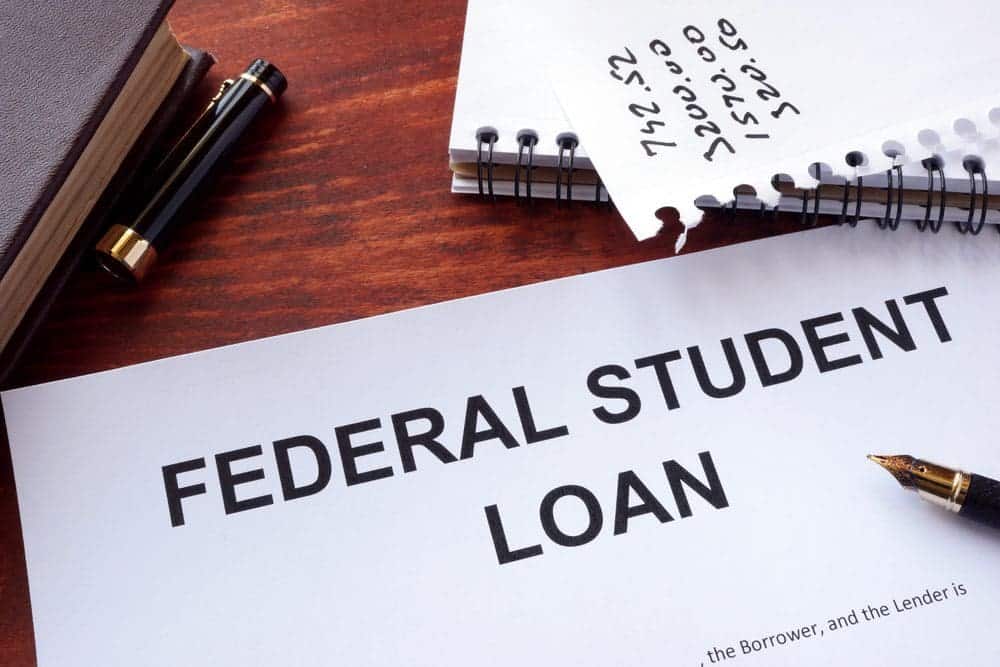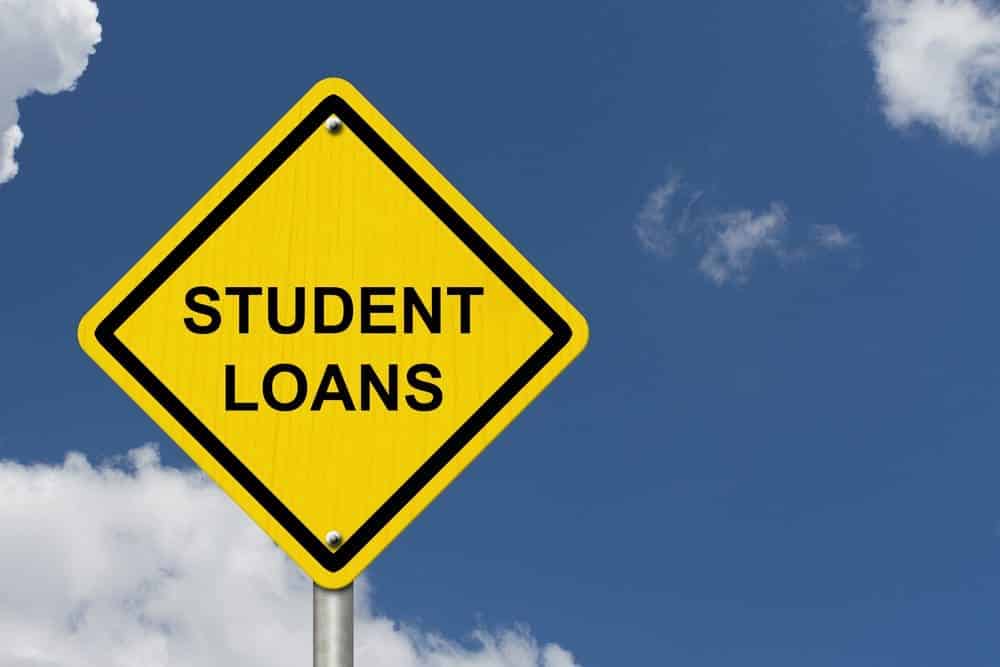Navigating the world of student loans can be daunting, but finding the best ones to fund your education is crucial. Are you ready to make a life-changing investment in yourself? This comprehensive guide will walk you through the essentials of federal and private student loans, eligibility, application, and repayment options. Let’s take control of your financial future together!
Key Takeaways
- Explore all loan options to maximize your educational investment.
- Take advantage of lower interest rates and repayment strategies for federal loans.
- Understand the application process for private student loans and explore debt management opportunities.
Understanding Federal Student Loans

Regarding funding your education, federal student loans should be at the top of your list. Offering lower interest rates and better protections than private loans, federal loans are a fantastic option to help you reach your academic goals.
So, what types of federal loans are available? Direct subsidized, direct unsubsidized, Grad PLUS, and Parent PLUS loans are here to support you on your educational journey. To be eligible for these loans, you must meet certain criteria, such as financial need, school year, dependency status, and total limits, including graduate loans.
Types of Federal Loans

Each type of federal loan is designed to cater to specific needs. Direct Subsidized Loans are perfect for eligible undergraduate students who demonstrate financial need. At the same time, Direct Unsubsidized Loans offer a fantastic opportunity for eligible undergraduate, graduate, and professional students, regardless of their financial situation.
Grad PLUS caters to graduate and professionals, with no borrowing limits, whereas Parent PLUS loans target parents with dependent undergraduate students and do have borrowing limits.
Don’t forget; Federal Direct PLUS loans usually have a borrowing limit: the total cost of college minus any Federal Direct Stafford loans or other financial aid. It’s important to be aware of this limit when budgeting for college. So, choose the right federal loan to maximize your educational potential!
Federal Loan Eligibility
To determine your eligibility for a federal loan, consider factors like financial need, school year, dependency status, and total limits, including graduate loans. Remember that the maximum amount of federal direct subsidized and unsubsidized loans undergraduate students can access yearly is up to $12,500.
You can make the most of this incredible opportunity by understanding your eligibility and the types of federal loans available.
Navigating Private Student Loans

While federal student loans should be your first choice, private loans can also be a good option for certain borrowers. For example, students who have already taken out the maximum federal loans but still need extra funds, or those with established credit, may benefit from private student loans.
However, credit score and the right private lender play a crucial role in securing these funds.
Selecting a Private Lender
To find the best private lender, it’s essential to compare their interest rates, repayment terms, fees, borrower benefits, eligibility requirements, and creditworthiness. Remember, each lender has different criteria, so exploring multiple lenders can help you make an informed decision and find the best financial product for your needs.
Always choose the lender that best matches your requirements and helps you reach your educational goals.
Importance of Credit History
Maintaining a good credit history is crucial for securing private student loans, as private lenders typically require a credit score of at least 670 to qualify. Your credit score impacts your interest rate, so the better your credit, the lower the rate you can secure.
Additionally, having a creditworthy cosigner can increase your chances of approval, especially if you have little or no credit history. By understanding the importance of credit history, you can take the necessary steps to improve it and secure the best private student loan.
Maximizing Your Borrowing Potential

Research all available options, loan types, school year, and dependency status to maximize your borrowing potential. By exploring every possibility, you can ensure that you receive the maximum financial support for your education and make the most of your investment in yourself.
Remember, the right combination of federal and private student loans can significantly impact your journey toward achieving your academic goals.
Interest Rates and Loan Costs

Congress sets federal student loan interest rates annually, offering a chance to save on college expenses. Conversely, private loan interest rates hinge on your credit score, rewarding higher scores with better rates.
To reduce interest payments, consider strategies like paying extra or refinancing to a loan with a lower rate.
Reducing Interest Payments
You can reduce interest payments on your student loans through various strategies. These include refinancing your loans, enrolling in autopay, signing up for an income-driven repayment plan, and making payments while in school to decrease the principal balance.
By employing these tactics, you can save on interest costs and manage your student loan debt more effectively.
Using Student Loans for Education Expenses

Student loans can cover college expenses, including tuition, fees, room and board, books, supplies, transportation, and other authorized charges. While federal student loans can help you pay for most expenses related to your college education, private loans may have more limitations.
Understanding how to use student loans effectively and responsibly is essential to make the most of your educational investment.
Applying for Student Loans: Step-by-Step Guide

Applying for student loans may seem intimidating, but breaking it down into manageable steps can make the process less daunting. Filing the Free Application for Federal Student Aid (FAFSA) is the first step in securing federal student loans. It is a necessary component of the application for these types of loans.
Private student loans require individual lender applications and credit score checks.
FAFSA and Federal Loans
The FAFSA serves as your gateway to federal student loans. Completing and submitting it helps you determine eligibility for need-based financial aid like federal grants, work-study, and some scholarships.
Subsequently, after receiving a financial aid offer from your college, you can accept all or part of the loan. Then, complete entrance counseling and contact the financial aid office to finalize the process.
Private Loan Applications
Applying for private student loans involves filling out an application, submitting required documents, and providing proof of income. It is generally have stricter eligibility requirements than federal loans, so you may need to pass a credit check and provide a cosigner to qualify.
By understanding the application process for federal and private student loans, you can confidently secure the funds needed to pursue your education.
Repayment Options and Strategies

Repayment options for federal student loans are flexible, with various plans available to suit your financial situation.
Private loan repayment, on the other hand, depends on the lender’s terms and conditions. Additionally, loan forgiveness is available for certain jobs, offering a fresh start for borrowers who meet specific conditions.
Loan Forgiveness and Debt Management

Understanding fees, interest rates, and compound interest is crucial when considering student loans. Federal loans generally offer more favorable rates, while private loans may be suitable for those with established credit.
Loan forgiveness programs, such as Public Service Loan Forgiveness (PSLF) and Income-Driven Repayment Forgiveness, may be available for eligible borrowers, providing relief from some of your debt.
Summary
In conclusion, finding the best student loans in 2023 requires understanding federal and private loan options, eligibility, application, and repayment strategies. You can confidently invest in your education and future success by staying informed and making intelligent financial decisions. So take control of your financial future, and make your educational dreams a reality!
Frequently Asked Questions
$200,000 in debt can seem overwhelming, but don’t let it stop you from achieving your dreams and pursuing your desired career. Proper budgeting and planning allow you to make consistent and successful payments to work towards debt freedom.
Creating a budget and sticking to it is the key to success. Start by tracking your income and expenses, then create a plan to pay off your debt. Consider setting up automatic payments to ensure that you never miss a payment. Additionally, look for additional information.
Forgiveness of loans is available after 20 years for undergraduate borrowers and 25 years for graduate or professional borrowers – making it a great option for those who may find themselves unable to make their full payments.
However, it is important to note that interest still accrues on your loan over the 20-25 year period.
The Student Loan Forgiveness Program, issued by the Obama Administration, is still being evaluated by the Department of Education. This program allows for borrowers to gain loan forgiveness if they meet certain criteria.
Right now, borrowers have some relief. The White House has extended the zero-interest pause on loan payments, and the Obama Administration’s Student Loan Forgiveness Program is currently under review. That means more flexibility and potential debt relief for borrowers in the near future.
Student loans can be a great investment. If responsibly managed and utilized to pursue the right degree, taking out loans to finance college is worth it in the long run.
They may present a significant burden in the short term, but with smart planning, that burden can become much easier to manage over time.
When it comes to financing your education, a subsidized loan is the best choice. This type of loan has the lowest interest rate and its interest is paid by the federal government while you are in school.
Moreover, they come with the most flexible repayment options, making them ideal for students.







